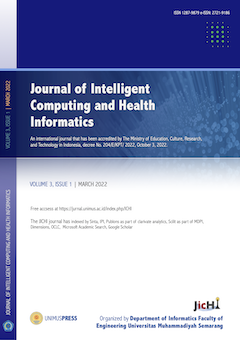Integration of GSTAR-X and Uniform location weights methods for forecasting Inflation Survey of Living Costs in Central Java
(1) Universitas Muhammadiyah Semarang
(*) Corresponding Author
Abstract
Keywords
Full Text:
PDFReferences
Borovkova, S., Lopuhaä, H. P., & Ruchjana, B. N. (2008). Consistency and asymptotic normality of least squares estimators in generalized STAR models. Statistica Neerlandica, 62(4), 482–508. https://doi.org/10.1111/j.1467-9574.2008.00391.x
BPS. (2008). PERKEMBANGAN INDEKS HARGA KONSUMEN/INFLASI. BPS: Berita Resmi Statistik, September, 1–9.
Ismiatul, S., & Rosyida, I. (2019). Implementasi Model Fuzzy-Wavelet dan FIS Metode Mamdani dalam Prediksi Nilai Tukar EUR / IDR. PRISMA, Prosiding Seminar Nasional Matematika, 2, 313– 322.
Nurani, B. (2002). Pemodelan Kurva Produksi Minyak Bumi Menggunakan Model Generalisasi Star. Forum Statistika Dan Komputasi, September(September), 1–6.
Nurchayani, F. (2016). Pengelompokan Stasiun Hujan untuk Model Generalized Space Time Autoregressive (GSTAR) pada Peramalan Curah Hujan Kabupaten Jember dengan Tiga Pembobotan. Universitas Jember.
Ruchjana, B. N. (2019). Pengembangan Model Spatio Temporal. Prosiding Seminar Nasional Matematika Dan Pendidikan Matematika 2019, 1–19.
Suhartono, & Subanar. (2006). The Optimal Determination of Space Weight in GSTAR Model Using Cross-Correlation Inference. Journal of Quantitative Methods, 2(2), 45–53.
Wei, W. W. . (2013). Time Series Analysis. In T. D. Little (Ed.), The Oxford Handbook of Quantitative Methods.Volume 2: Statistical Analysis (2nd ed., pp. 458–485). Oxford University Press.
Article Metrics
Abstract view : 552 timesPDF - 93 times
DOI: https://doi.org/10.26714/jichi.v1i1.5583
Refbacks
- There are currently no refbacks.
____________________________________________________________________________
Journal of Intelligent Computing and Health Informatics (JICHI)
ISSN 2715-6923 (print) | 2721-9186 (online)
Organized by
Department of Informatics
Faculty of Engineering
Universitas Muhammadiyah Semarang
W : https://jurnal.unimus.ac.id/index.php/ICHI
E : jichi.informatika@unimus.ac.id, ahmadilham@unimus.ac.id
This work is licensed under a Creative Commons Attribution-ShareAlike 4.0 International License.









